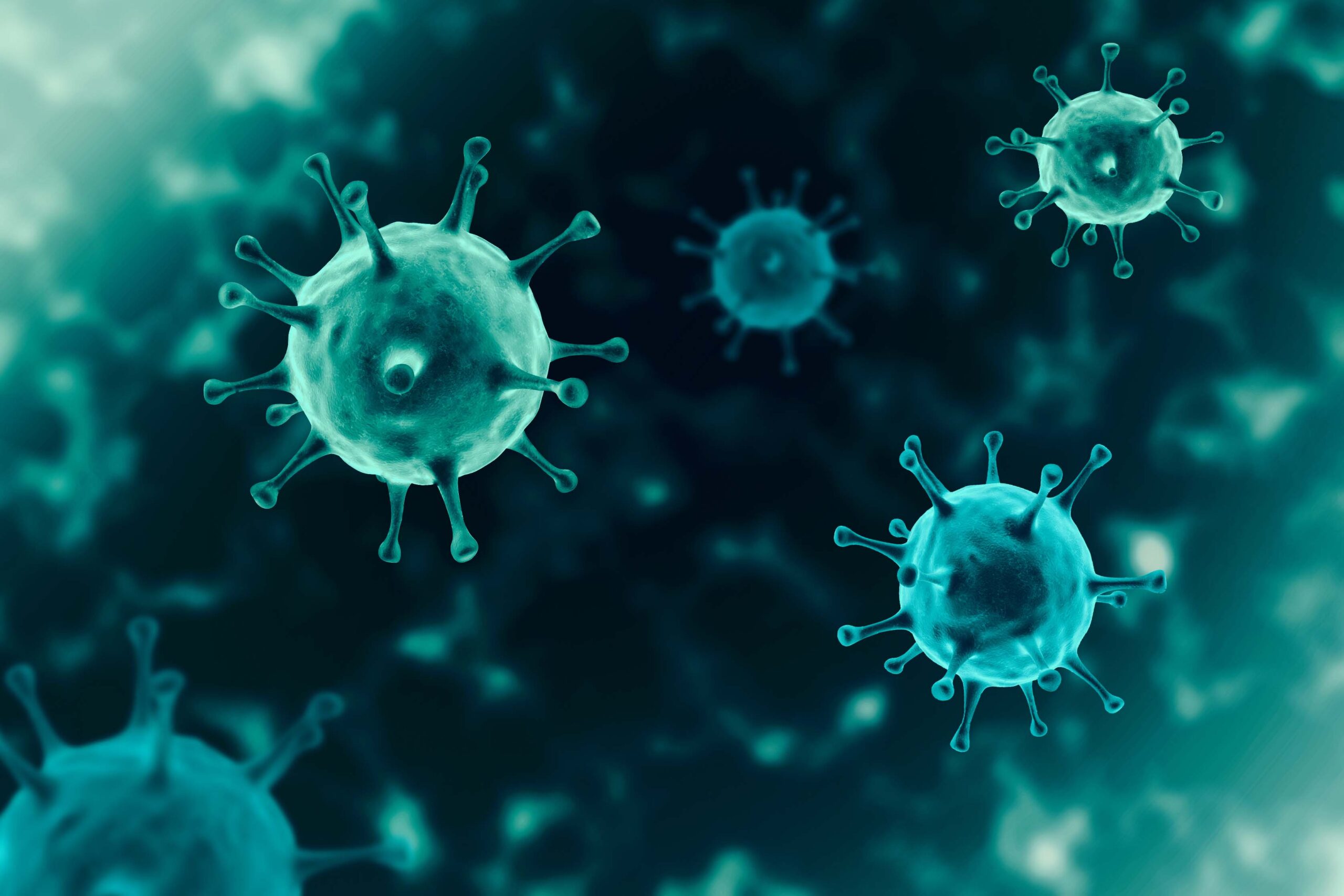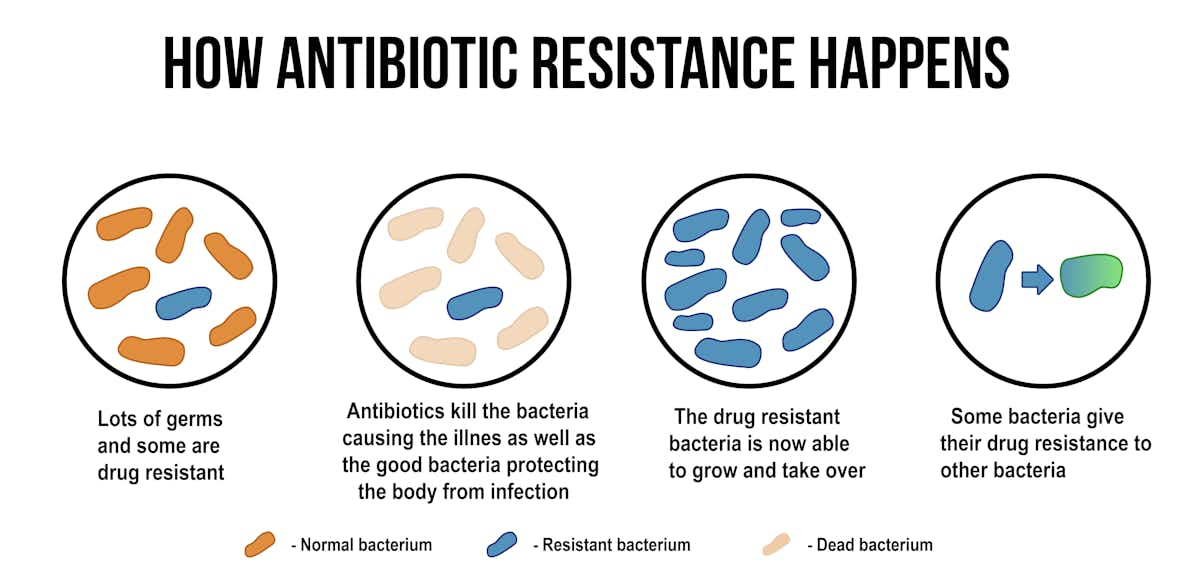By Sara McPherson
To understand the differences between bacterial and viral infections, the first step is understanding what the differences are between the organisms that cause these infections. As the names suggest, bacterial infections are caused by bacteria and viral infections are caused by viruses. But what are these infectious agents and how do they differ from one another?
Bacteria are single-celled organisms that can live in a variety of environments. Many bacterial species exist within our bodies as beneficial bacteria, for example, living in our gut and aiding in tasks like digestion. They may also live outside our bodies, living in the depths of the ocean or in soils found around the world. They are not always harmful, but when they start to grow in our bodies at a rapid rate or grow in a place that they are not typically found they can cause infections and harm our bodies. In order to infect a host (a living organism that a pathogen might use as a home or source of nutrients), they compete for resources in the human body and cause harm when they are able to out-compete other cells and organisms that may normally be present.
Viruses differ from bacteria because they are not considered living organisms. This is because they cannot live for long outside of a host. In other words, viruses require a host to live, grow and multiply. Viruses are essentially a shell containing its genetic material (usually DNA or similar materials) and a mechanism that allows the viral particle to insert its DNA into the host. The virus then uses the replication machinery of the host to replicate the DNA and continue to spread and infect other hosts. The type of host that is needed may differ depending on the virus because a virus might have specific requirements for growth and replication. Humans are an example of a potential viral host, but are not the only possible one – animals such as birds or livestock can also act as a host. In this case, an animal may be the only possibility, or in other circumstances, viruses can be passed between hosts, where an animal can pass a virus to a human or vice versa. This does not usually happen unless the virus is able to mutate, so it is still safe to go to zoos or farms and interact with the animals.
The real question is, what are the differences when it comes to treatment? When you have either a bacterial or a viral infection, there is a lot of overlap in terms of symptoms. Most of these infections can result in symptoms that you would expect when you get a cold or mild flu. Some of these symptoms include sore throat, headache, fever, and cough. However, these microbes are different organisms so it is important to treat them differently to get rid of an infection. One of the most common misconceptions is that antibiotics can be used to get rid of any type of cold or infection. That is not the case. Antibiotics should only be used in the case of a bacterial infection, not for any other type of illness.
There are several reasons that antibiotics should never be used to treat viral infections. The primary reason is that antibiotics are not effective in treating anything other than bacterial infections and illnesses. As previously stated, viruses are not considered living organisms. For this reason, antibiotics cannot kill viruses. Antibiotics can work using a few different mechanisms, but all of these mechanisms target things like the cell wall, protein synthesis, and metabolite activity. None of these mechanisms exist within a viral particle since viruses depend on their host for existence. Although antibiotics are ineffective at killing viral particles, is there really any harm to taking antibiotics as a precaution?
In short, yes, even though antibiotics seem like they do no harm they cause issues when not taken at the appropriate dose or if they are taken when there is no bacterial infection. The reason that antibiotics are only taken in limited circumstances is that bacteria have been known to mutate which can lead to antibiotic resistance, and there are beneficial bacteria living in your body that you do not want to kill off if it is not necessary. Antibiotic resistance is an important issue when it comes to antibiotic use because it means that antibiotics will be ineffective against these resistant colonies.
When someone takes antibiotics, the aim is to kill all the harmful bacteria that may be causing illness. However, when antibiotics are not taken as prescribed, or taken to fight a viral infection, the majority of the bacteria die, but there will be some that have a beneficial mutation that helps them survive. These mutated bacteria will then be able to grow and mate, leaving the next generation of bacteria resistant to that antibiotic because they will have inherited the beneficial antibiotic resistance mutation. This means that if these mutated bacteria cause an infection, the same type of antibiotic cannot be used again as it will be ineffective. This causes problems because it becomes significantly more challenging to kill off these “super-bacteria.”
Essentially, antibiotics can create future problems if they are not taken as prescribed by a physician and should never be used to treat viral infections.
If you are interested in learning more about antibiotic resistance on a global scale, the following article from the World Health Organization has more detailed information about the subject: https://www.who.int/news-room/fact-sheets/detail/antibiotic-resistance.
More information on antibiotics and antibiotic resistance can also be found here: https://www.ncbi.nlm.nih.gov/pmc/articles/PMC4378521/.
Works Cited
- Infection: Bacterial or viral? [Internet]. Mayo Clinic. Mayo Foundation for Medical Education and Research; 2020 [cited 2022Apr30]. Available from: https://www.mayoclinic.org/diseases-conditions/infectious-diseases/expert-answers/infectious-disease/faq-20058098#:~:text=As%20you%20might%20think%2C%20bacterial,aren%27t%20effective%20against%20viruses
- What’s the difference between bacteria and viruses? [Internet]. Institute for Molecular Bioscience. 2022 [cited 2022Apr30]. Available from: https://imb.uq.edu.au/article/2020/04/difference-between-bacteria-and-viruses
- BSCI 424 pathogenic microbiology — mechanisms of antibiotic action and resistance. [cited 2022Apr30]. Available from: https://science.umd.edu/classroom/bsci424/Chemotherapy/AntibioticMechanisms.htm
- Ventola CL. The antibiotic resistance crisis: Part 1: Causes and threats [Internet]. P & T : a peer-reviewed journal for formulary management. MediMedia USA, Inc.; 2015 [cited 2022Apr30]. Available from: https://www.ncbi.nlm.nih.gov/pmc/articles/PMC4378521/
- Zahidul Alam Postdoctoral Fellow. How to train the body’s own cells to combat antibiotic resistance [Internet]. The Conversation. 2019 [cited 2022Apr30]. Available from: https://theconversation.com/how-to-train-the-bodys-own-cells-to-combat-antibiotic-resistance-106052
Sara is a fourth-year biology student at the University of Waterloo, with a particular passion for genetics and anything molecular biology. She is currently working as a co-op student at the BC Cancer Center where she is enjoying studying cancer research and cancer genetics. Outside of her studies, Sara enjoys playing a variety of sports. In the winter you can find her at the rink playing ice hockey and during the summer outside playing soccer.
[/et_pb_text][/et_pb_column][/et_pb_row][/et_pb_section]








